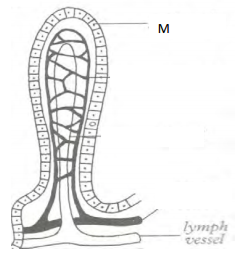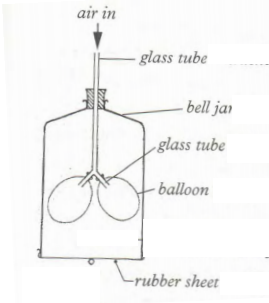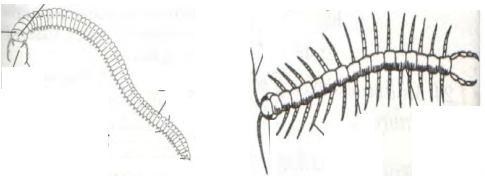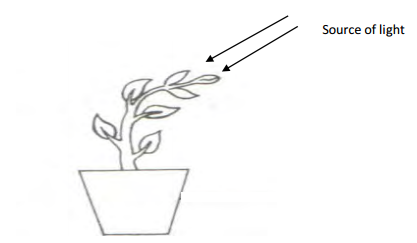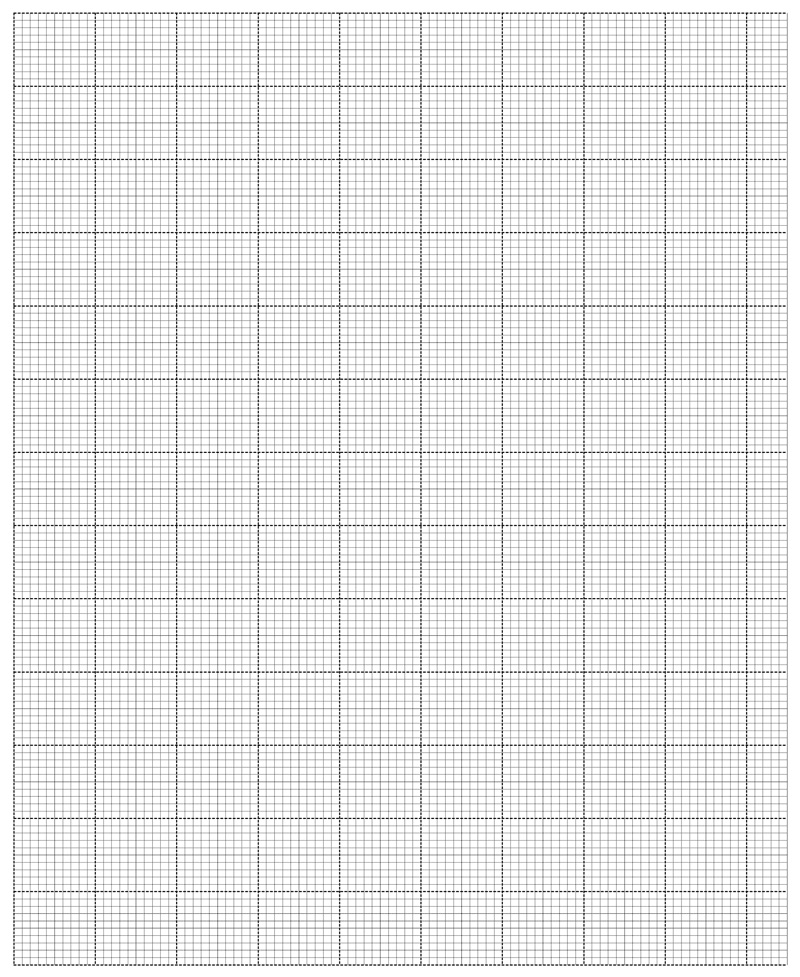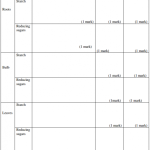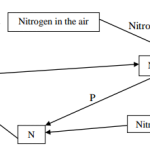KNEC KCSE Biology Paper 2 Question Paper / 2016 KCSE 4MCK Joint Exam
2016 KCSE 4MCK Joint Exam
Biology Paper 2
SECTION A (40 Marks)
A cross section between two tall plants produced a mixture of tall and dwarfs plants at a
ratio of 3:1 respectively.
a) If the offspring were selfed; carry out a genetic cross in which the F2 generation were
half tall and half dwarf. Show your working. (3 marks)
Use letter T
b) State the difference between co-dominance and incomplete dominance. (1 mark)
………………………………………………………………………………………………
………………………………………………………………………………………………
………………………………………………………………………………………………………………………………
c) Explain the meaning of the following chromosomal mutations. (3 marks)
i) Deletion
…………………………………………………………………………………………
………………………………………………………………………………………….
ii) Inversion
…………………………………………………………………………………………
…………………………………………………………………………………………..
iii) Translocation
…………………………………………………………………………………………
………………………………………………………………………………………….
d) Name a disorder in man caused by non-disjunction. (1 mark)
…………………………………………………………………………………………………
8 marks
The diagram below represents a structure obtained from the alimentary canal of a cut.
a) Identify the structure (1 mark)
……………………………………………………………………………………………
b) State the function of the part labeled M. (1 mark)
……………………………………………………………………………………………
c) State three adaptations of the above structure to its function. (3 marks)
………………………………………………………………………………………………………
………………………………………………………………………………………………………
………………………………………………………………………………………………………
………………………………………………………………………………………………………
………………………………………………………………………………………………………
d) Give a reason for each of the following practices when testing for starch in a leaf.
(i) Boiling the leaf in water for sometime. (1 mark)
………………………………………………………………………………………………………
………………………………………………………………………………………………………
(ii) Boiling the leaf in methylated spirit. (1 mark)
………………………………………………………………………………………………………
………………………………………………………………………………………………………
(iii) Not directly boiling the leaf in methylated spirit on flame. (1 mark)
………………………………………………………………………………………………………
………………………………………………………………………………………………………
8 marks
The diagram below represents a model to demonstrate the breathing system in a mammal.
Study it carefully and answer the questions that follow
a) State the part in a mammal represented by each of the following parts in the model. (4 marks)
(i) Bell jar
………………………………………………………………………………………………………
………………………………………………………………………………………………………
(ii) Glass tube
………………………………………………………………………………………………………
………………………………………………………………………………………………………
(iii) Balloons
………………………………………………………………………………………………………
………………………………………………………………………………………………………
(iv) Rubber sheet
………………………………………………………………………………………………………
………………………………………………………………………………………………………
b) State the difference between the above model and the structures in the actual mammal.
(3 marks)
………………………………………………………………………………………………………
………………………………………………………………………………………………………
………………………………………………………………………………………………………
………………………………………………………………………………………………………
………………………………………………………………………………………………………
………………………………………………………………………………………………………
c) What is the role of the guard cells in a plant? (1 mark)
………………………………………………………………………………………………………
………………………………………………………………………………………………………
8 marks
Students collected the following organisms for study. Their teacher said that the organisms
belonged to two different classes.
a) With a reason identify the class for each. (3 marks)
A
Class
………………………………………………………………………………………………………
Reason
………………………………………………………………………………………………………
B
Class
………………………………………………………………………………………………………
Reason
………………………………………………………………………………………………………
b) State two similarities between the two organisms. (2 marks)
………………………………………………………………………………………………………
………………………………………………………………………………………………………
………………………………………………………………………………………………………
c) Why is it necessary to classify organisms. (3 marks)
………………………………………………………………………………………………………
………………………………………………………………………………………………………
8 marks
The diagram below represents a potted plant transferred to a dark room with an open window
for two days
a) (i) Name the type of response shown by the plant above. (1 mark)
………………………………………………………………………………………………………
(ii) What is the survival value of the above response to the plant. (1 mark)
………………………………………………………………………………………………………
………………………………………………………………………………………………………
(iii) Explain what led to the above curvature (3 marks)
………………………………………………………………………………………………………
………………………………………………………………………………………………………
………………………………………………………………………………………………………
………………………………………………………………………………………………………
………………………………………………………………………………………………………
………………………………………………………………………………………………………
b) Tom was reading a newspaper from outside where there was a lot of light. Briefly explain
what changes occurred in his eyes when he entered into a dark room. (3 marks)
………………………………………………………………………………………………………
………………………………………………………………………………………………………
………………………………………………………………………………………………………
………………………………………………………………………………………………………
………………………………………………………………………………………………………
8 marks
SECTION B (40 Marks)
Answer question 6 (compulsory) and either question 7 or 8 in the spaces provided.
In a school invaded by mosquitoes and cockroaches, students collected a data on the
population of each species for a period of two weeks. The results were tabulated in the table
below.
| DAY | 1 | 3 | 6 | 9 | 12 | 15 |
| No. OF MOSQUITOES | 35 | 60 | 130 | 210 | 260 | 250 |
| No. OF COACKROACHES | 20 | 40 | 56 | 70 | 75 | 80 |
a) On the same axes plot the graphs of the two populations against time. (7 marks)
b) State the most suitable equipment to collect each of the species (2 marks)
Cockroaches ………………………………………………………………………………..
Mosquitoes …………………………………………………………………………………
c) Account for the shape of the curve for the mosquitoes between (4 marks)
(i) 1st and 3rd day
………………………………………………………………………………………………………
………………………………………………………………………………………………………
………………………………………………………………………………………………………
………………………………………………………………………………………………………
(ii) 12th and 15th day
………………………………………………………………………………………………………
………………………………………………………………………………………………………
………………………………………………………………………………………………………
………………………………………………………………………………………………………
d) Calculate population growth rate of the cockroaches between the 3rd and the 9th day
(2 marks)
………………………………………………………………………………………………………
………………………………………………………………………………………………………
………………………………………………………………………………………………………
………………………………………………………………………………………………………
e) Explain why
(i) The cockroach is better adapted in the environment than the mosquito. (1 mark)
………………………………………………………………………………………………………
………………………………………………………………………………………………………
(ii) The population growth of the mosquitoes is not affected by the population of the
cockroaches. (2 mark)
………………………………………………………………………………………………………
………………………………………………………………………………………………………
f) State three adaptations of the submerged hydrophytes to their photosynthetic function.
(3 marks)
…………………………………………………………………………………………………
…………………………………………………………………………………………………
…………………………………………………………………………………………………
…………………………………………………………………………………………………
20 marks
a) (i) In evolution of man give three features associated with the Homo erectus. (3 marks)
(ii) State three limitations of fossils as an evidence of evolution. (3 marks)
b)(i) Giving an example in each case, explain the meaning of the following terms as used in
Evolution (6 marks)
Homologous structures.
Analogous structures.
Vestigial features.
(ii) Give three examples of natural selection in action. (3 marks)
c) Briefly explain Charles Darwin’s idea of evolution. (5 marks)
20 marks
Discuss the menstrual cycle in man.
20 marks
